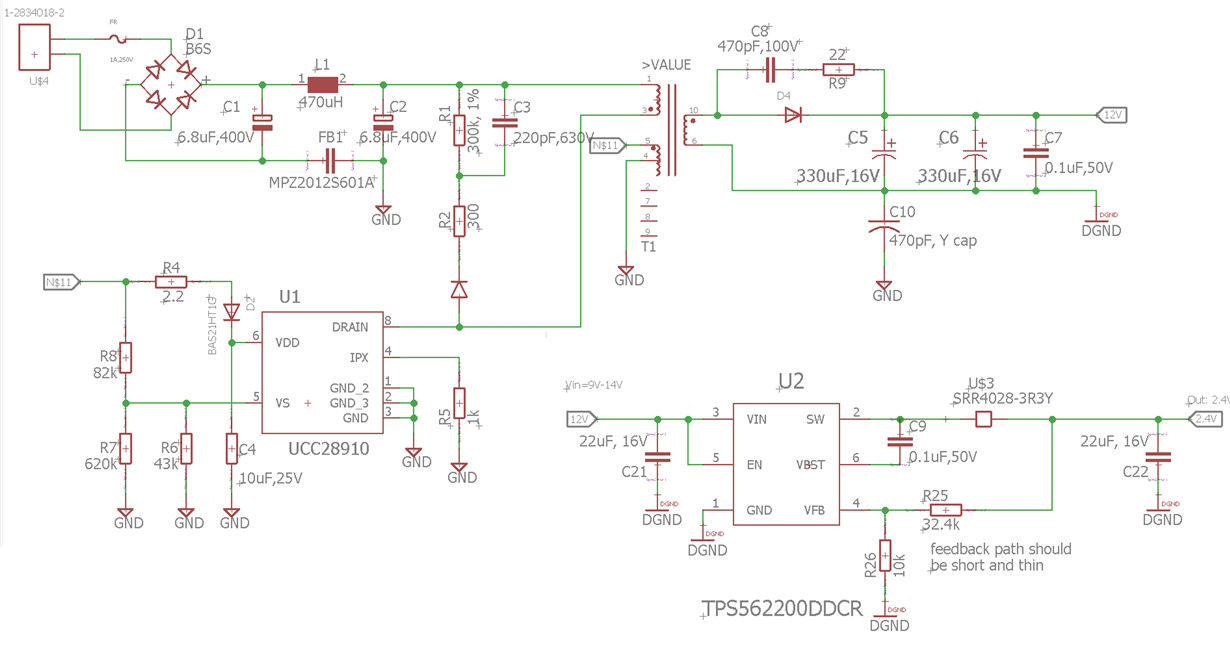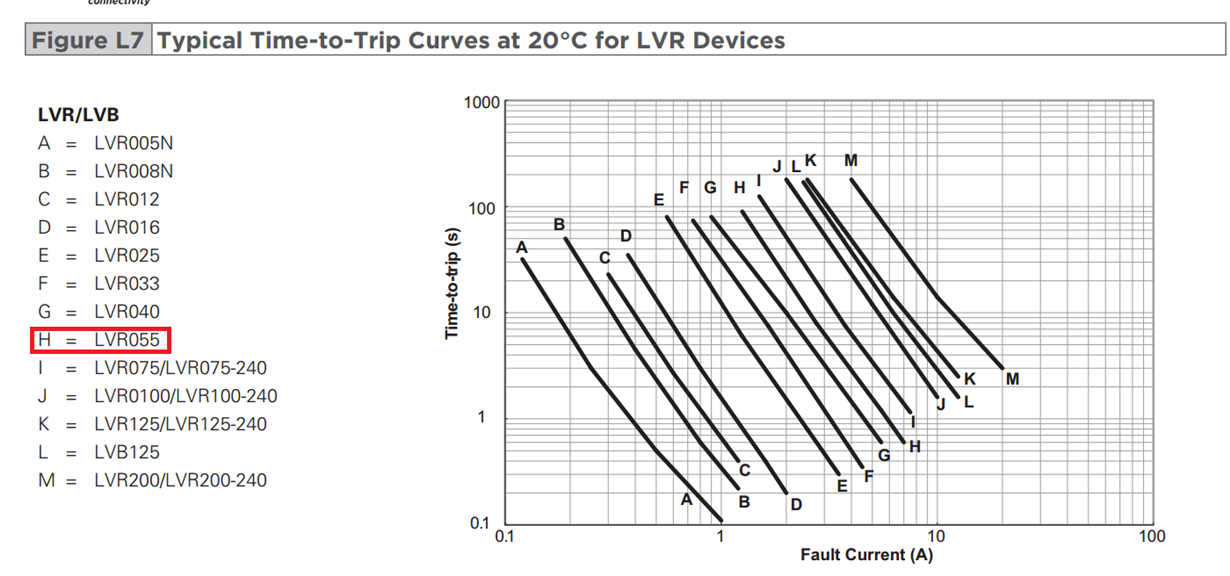My PSU design is based on PMP4447. I experience time to time fuse breakage at AC input at the start-up. That's why I'd like to have an in-rush protection that is low cost and smaller size. Could any expert advise which solution is best to use?
PSU powers CC2650 based board a 12V module that consumes about 0.5 Watt at max.
Here is my schematics:
Datasheet of the fuse: www.mouser.com/.../MF2410 Datasheet2013-247737.pdf
Bridge rectifier: http://www.mouser.com/ds/2/149/MB8S-1010921.pdf
Input capacitors ( C1, C2) http://www.farnell.com/datasheets/1879709.pdf?_ga=1.156179451.1778970300.1468686107
The fuse I use is a fast acting one, I am considering to change it with a resettable-fuse, e.g., a PPTC fuse. However, it is an outdoor application and the devices are primarily used in Nordic environment where the outdoor temperature can get -20C or lower, and performance of PPTC is based on the temperature. I wonder if it would cause problem that it can allow more current to flow at the low temps and can block the current when it gets warm at normal conditions. I am considering to use LVR055K http://www.farnell.com/datasheets/1902602.pdf?_ga=1.88011992.1778970300.1468686107
Another issue about how fast it reacts:
Do I understand correct that it takes about 90 sec to cut the power if 1.25A is applied? (it is too slow if it is the case)
Other option is to use a NTC Thermistor at the AC input, however, I again have the same temperature concern if the resistance at the cold weather could be a problem? I am considering this option B57153S330M http://www.mouser.com/ds/2/400/B57153_S153-525574.pdf
I'd highly appreciate your comments



